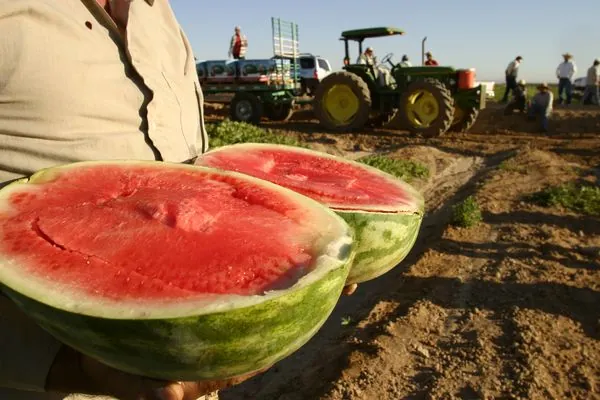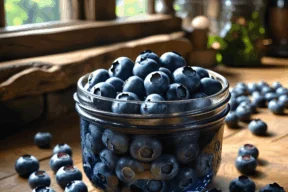Farm Facts That Feed You
Our Top Summer Vegetables

Arizona’s Top Summer Fruits and Vegetables
Since it gets so hot in Arizona, most people assume the array of summer fruits and vegetables we grow must be limiting. But it’s not!
In fact, the amount of summer vegetables we grow is mind blowing. Go to any Arizona Farmers Market in June, July and August and into September and you’ll realize we have an abundance of summer fruits and vegetables.
Here are some fun facts about summer fruits and veggies:
- Watermelon: Nothing beats the taste of fresh watermelon on a hot summer day. Made up of mostly water, watermelon is one of the most hydrating fruits. To know when a melon is ripe, look at the yellow spot. If it’s a creamy, buttery color, it is ready to eat. Our watermelon farmers in Arizona grow some of the sweetest, refreshing melons around.
- Cantaloupe: The fiber, potassium, and vitamin C present in cantaloupes are important nutrients for your hearth health. At 60 calories and no fat per 1-cup serving, eating cantaloupe can help you add potent nutrients and sweetness to your healthy eating plan. Arizona-grown cantaloupe is some of the tastiest.
- Blackberries: The blackberry is big on promoting brain health and may lower the risk of Type 2 diabetes. They are popular in a variety of recipes but our favorite way to eat them is right off the vine. But a blackberry pie comes in a close second.
- Strawberries: A one cup serving of strawberries supplies more vitamin C than an orange. Eating strawberries on a regular basis provides a combination of essential nutrients that benefit your entire body, including folate, potassium and fiber. To keep strawberries fresh, store them in a covered glass bowl in the fridge.
- Peaches: Sweet, juicy peaches contain fiber and vitamins A and C. Peaches and nectarines are considered twins. The only difference between them is that a peach has fuzzy skin and a nectarine’s skin is smooth. Our peach season in Arizona comes early and by mid-summer most of our peaches have been picked. But we still call them a spring and summer fruit.
- Sweet Corn: Central Arizona’s sweet corn season runs from late May to Mid-July. Then the harvesting moves north and south. Specifically, northern and southern Arizona’s season runs from mid-July to the end of September. Depending on the sweet corn variety, sweet corn can be ready for harvest in 65 to 90 days. Cholesterol free, sweet corn is a good source of vitamin C and A, potassium, thiamine and fiber, and it’s very high in antioxidants. Corn on the cob and cut corn is 100% whole grain.
- Okra: Also known as lady’s finger, Okra is high in fiber, aiding digestion and preventing constipation. It supports a healthy gut by promoting the growth of beneficial bacteria. While it’s generally utilized like a vegetable in cooking, it’s actually a fruit. Frequently used in Southern American cuisine and a popular addition to gumbo, it’s packed with nutrition including vitamins A, C, K and B6.
- Tomatoes: Nothing says summer like a plump, ripe tomato. This summer favorite, which comes in a rainbow of colors, is rich in lycopene, a compound known to help promote heart health. For the best flavor, store tomatoes at room temperature away from direct sunlight.
- Cucumbers: Made up of 95% water, cucumbers are hydrating and only 17 calories per cup. Leave the skin on for a boost of fiber and lutein, a powerful plant nutrient that promotes vision health too.
- Summer Squash: Zucchini, or summer squash, is packed with vitamins A and C, plus potassium and fiber. For a delicious summer meal, make a zucchini “boat” by cutting roasted or grilled zucchini in half and scooping out the seeds. Stuff the inside with seasoned vegetables and lean meat.
- Green Beans: Low in calories and good for the heart, green beans are full of soluble fiber. This helps lower your LDL (bad) cholesterol levels. Don’t be fooled by the name—green beans also come in yellow and purple!
- Bell Peppers: Available in many colors, bell peppers are rich in the antioxidant vitamin C. Red, orange and yellow peppers start as green peppers and change color as they ripen. Each color has its own set of unique antioxidants. Peppers are a great addition to many meals, including sandwiches, stir fries and salads.
Sources: Nutrition and Dietetics Association, and our Arizona farmers.
Our Videos
View all VideosOur Latest Posts

The Scoop on Salt
For the longest time I never understood why every baking recipe always called for a teaspoon or two of salt, even if the baked good…

Training for Life’s Marathon: Fuel to Move, How Smart Nutrition Powers Everyone
This November, Tempe will once again become a stage for grit, perseverance, and pure human willpower as athletes dive into the waters, mount their bikes,…
Featured Recipes













